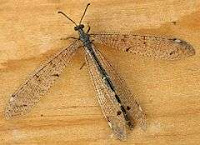Sometimes some of the most interesting things to show guests on a nature guiding activity are not bigger than a few millimeters, but they are more interesting and in some cases more ferocious than any Lion or Leopard or Crocodile.
Insects are all around us, you can see them almost anywhere and at any time of the day, and there are thousands of different types all doing different things and all fitting into their different roles in the environment. Unfortunately not all guests really like insects and for many they are simply a nuisance and everybody things insects bite, yes there are of course some that bite and sting but there are a lot that are completely harmless and extremely interesting. Over the next few weeks we are going to look at some interesting insects that are hard to miss when you are out in the field and because of that guests always point and ask questions about them.
One such insect is the Antlion. The Antlion is one of my favorite type of insects to show guests especially on a walk, but it works just as well on a game drive especially if you have stopped somewhere for a coffee brake or a picnic. Inevitably when you climb out of the vehicle you will notice these small strange pits constructed in the sand and the guests will ask you what it is.
Antlions are insects belonging to the family Myrmeleontidae and there are a lot of different species and not just in Africa. The name Antlion refers to the larval stage of this insect and the adults are called “antlion lacewings and they resemble something close to damselflies and dragonflies. The adult lacewings have long slender bodies, two pairs of narrow, long multi-veined wings and clubbed antennae.
 |
| Adult Antlion Lacewing. |
The whole process starts with the female laying an egg in the soft sand, poking the sand with her abdomen until she finds a suitable soft sand area to lay her egg. The larvae, as far as insect go is a ferocious looking critter with three pairs of walking legs, a fat round abdomen, flat head and an enormous pair of sickle shaped pinchers, with sharp hollow projections. Antlion larvae have different ways of hunting but the ones in Africa and Tanzania make sandy pits to capture a variety of small insects and as the name suggests they also feed a lot on ants.
The pits that they use to capture their prey are made in soft sand and the antlion uses his abdomen like a shovel and by moving backwards and flicking sand out by using his head he makes a steep pit with very loose sand on the side walls and when prey fall in there they can not get out as the sides collapse under them as they try to get out the antlion also flicks sand at them to topple them over and get them to fall back to the bottom of the pit where he then immediately grabs them with those big jaws and starts to suck out the fluids from his prey through the hollow projections on the side of its jaws. When the antlion has finished feeding he simply flicks the dead prey out of his pit and to the side.
| Antlion larvae Pits to catch prey. |
The antlion eventually pupates which is a cocoon of sand stuck together with fine silk that they spin from a slender spinneret situated at the posterior end of the body. After about a month when the transformation into adult is complete, the adult antlion lacewing climbs to the surface and after about twenty minutes the wings are fully opened and it will fly of in search of a mate.
| Showing your guests what the Antlion larvae looks like. |
What is interesting for your guests is to catch an antlion by using a thin piece of grass and to gently “tickle” it to the surface and then put it in your hand and by turning your binoculars upside down let the guests look through it and it acts as a magnifying glass, you can then clearly see what they look like. After everyone has had a look gently place him in the same pit you found him from.

No comments:
Post a Comment